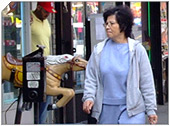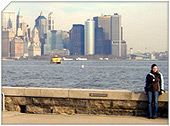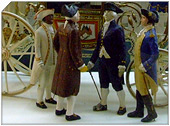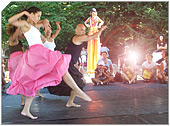Woodhavent, Queens, New York City
|
Getting Started
Index
NYC Neighborhoods
Manhattan
Brooklyn
Queens
Bronx
Staten Island
NYC Icons
Chrysler Building
Flatiron Building
Empire State Building
Safe NYC
NYPD
FDNY
NYC Weather
NYC Climate
NYC Weather Forecast
Winter Season
Spring Season
Summer Season
Fall Season
NYC History & Politics
New York City History
Tammany Hall and Politics
New York City Politicians
New York City Personalities
Culture of Gotham City
Culture of the city
Cultural diversity
City in popular culture
|
Woodhaven once known as Woodville, is home to a wealthy mix of middle to upper-class residents, mostly a middle-income neighborhood in the New York City borough of Queens. This neighborhood traditionally preserves its surburban looks. Woodhaven is situated between Forest Park and Richmond Hill and serves one of the most diverse communities in Queens. Woodhaven also resides one of the greatest tree population in the borough and resides just three miles west from the border between Queens and Nassau Country. The convenience from schools to transportation to community involvement and park recreation in Woodhaven serves most of the well-known features in this neighborhood.
Commerce is centered on Jamaica Avenue which effectively bisects Woodhaven. On this avenue, from Forest Parkway on the west to Richmond Hill, Queens, on the east, are a number of stores, most being small and locally owned. One of the oldest and best known was Lewis' of Woodhaven which had two locations and recently closed its doors. Woodhaven is bordered on the north by a public park, Forest Park, and a street named Park Lane South. Woodhaven also forms the border with the neighborhood of Ozone Park.
History
Woodhaven began in the mid-1700s as a small town that revolved around farming. The first European settlements here were by the Ditmar, Lott, Wyckoff, Suydam and Snediker families. One of the greatest battles from the American Revolutionary War took place in Woodhaven, near present-day Forest Park (Golf Course). Later, Woodhaven became the site of two racetracks: the Union Course (1821) and the Centerville (1825). Union Course was a nationally famous racetrack situated in the area now bounded by 78th Street, 82nd Street, Jamaica Avenue and Atlantic Avenue. The Union Course was the site of the first skinned - or dirt - racing surface, a curious novelty at the time. These courses were originally without grandstands. The custom of conducting a single, four-mile race consisting of as many heats as were necessary to determine a winner, gave way to programs consisting of several races. Match races between horses from the South against those from the North drew crowds as high as 70,000. Several hotels (including the Forschback Inn) were built in the area to accommodate the racing crowds.
A Connecticut Yankee, John R. Pitkin, developed the eastern area as a workers' village and named it Woodville (1835). In 1853, he launched a newspaper, and the few inhabitants voted to change the name of the village to Woodhaven.
In 1836, Long Island Rail Road (LIRR) cars were pulled by horses along Atlantic Avenue. The train traveled with other traffic at street level and stopped at all major intersections - much as a bus does - except that people would often hop on and hop off the train while it was moving. The 1848 LIRR schedule shows an intersection called Union Course (serving that racetrack) and another called Woodville (farther east).
Two Frenchmen named Charles Lalance and Florian Grosjean launched the village as a manufacturing community by opening a tin factory and improving the process of tin stamping. As late as 1900, the surrounding area, however, was still primarily farmland, and from Atlantic Avenue one could see as far south as Jamaica Bay, site of present-day John F. Kennedy International Airport.
Since 1894, Woodhaven's local newspaper has been the Leader-Observer. Majority of homes in Woodhaven as stated are one- two-family homes. Technically, it is a mixed neighborhood of single family homes (detached or in rows), and also preserves its suburban-type look from mostly cobble-stone sidewalks to old-fashioned looking lamp posts. Many proclaimed that because of Woodhaven's rich history, sometimes it can remind one of a haunted place with hills going up and then along many areas of the neighborhood.
|
New York City Search
Quick NYC
|
|
|
 How safe is New York City?
How safe is New York City? Contrary to popular belief, the City consistantly ranks in the top ten safest large cities in the United States. The NYPD is the largest municipal police force in the world and has it's own Movie/TV Unit. |

New York has a humid continental climate resulting from prevailing wind patterns that bring cool air from the interior of the North American continent. New York winters are typically cold with moderate snowfall.  New York Weather Forecast New York Weather Forecast |

New York's two key demographic features are its density and diversity. The New York City metropolitan area is home to the largest Jewish community outside Israel. It is also home to nearly a quarter of the nation's South Asians, and the largest African American community of any city in the country.  Ethnic composition Ethnic composition |

New York Newspapers
 
|



 New York Weather Forecast
New York Weather Forecast
 Ethnic composition
Ethnic composition


















